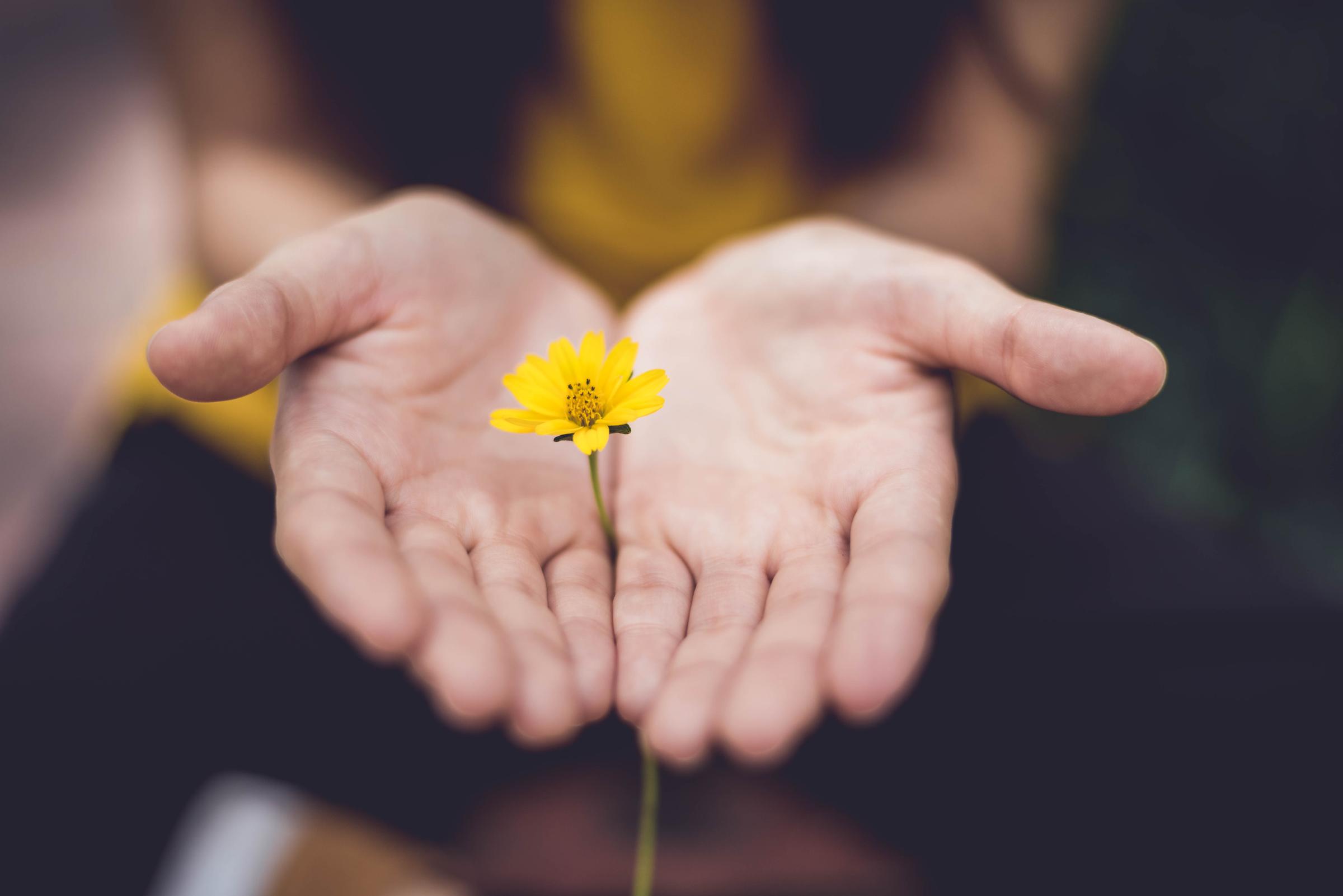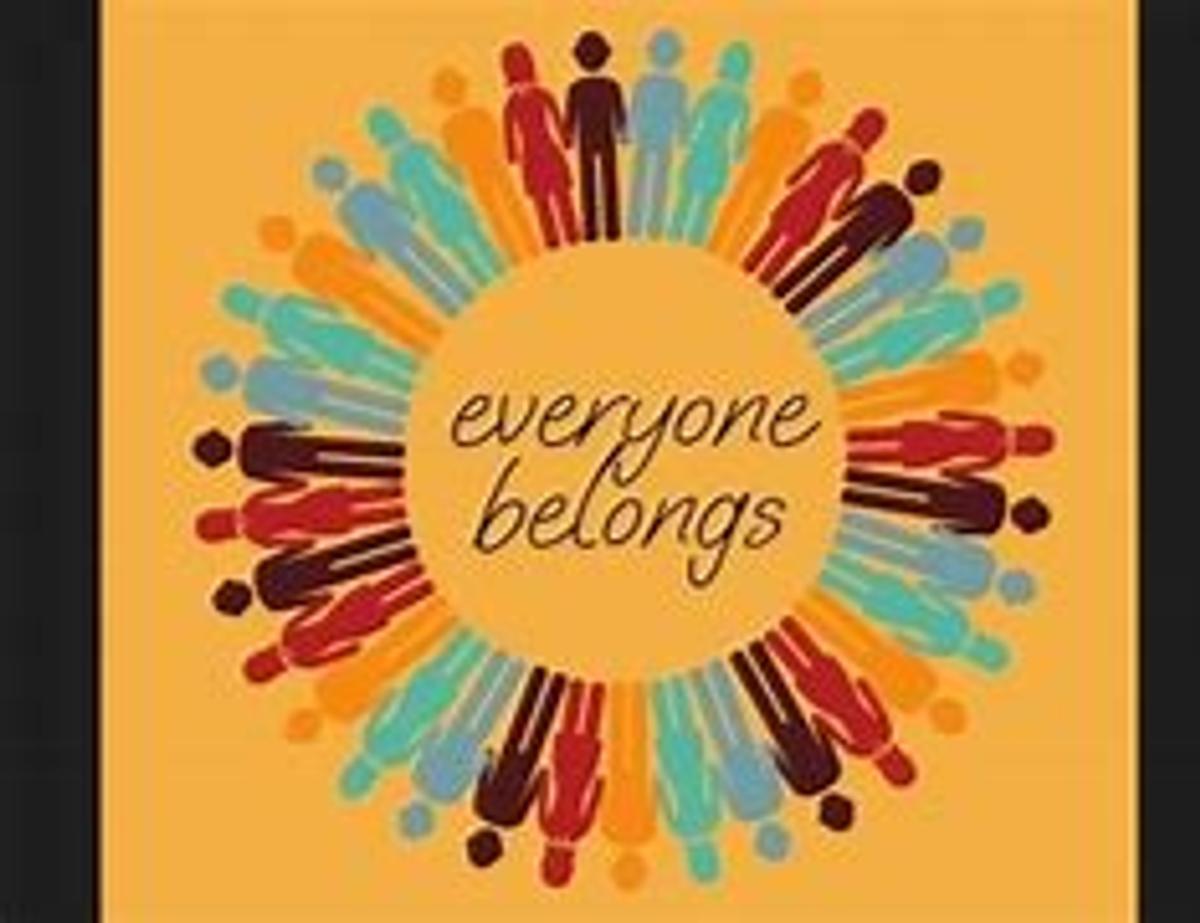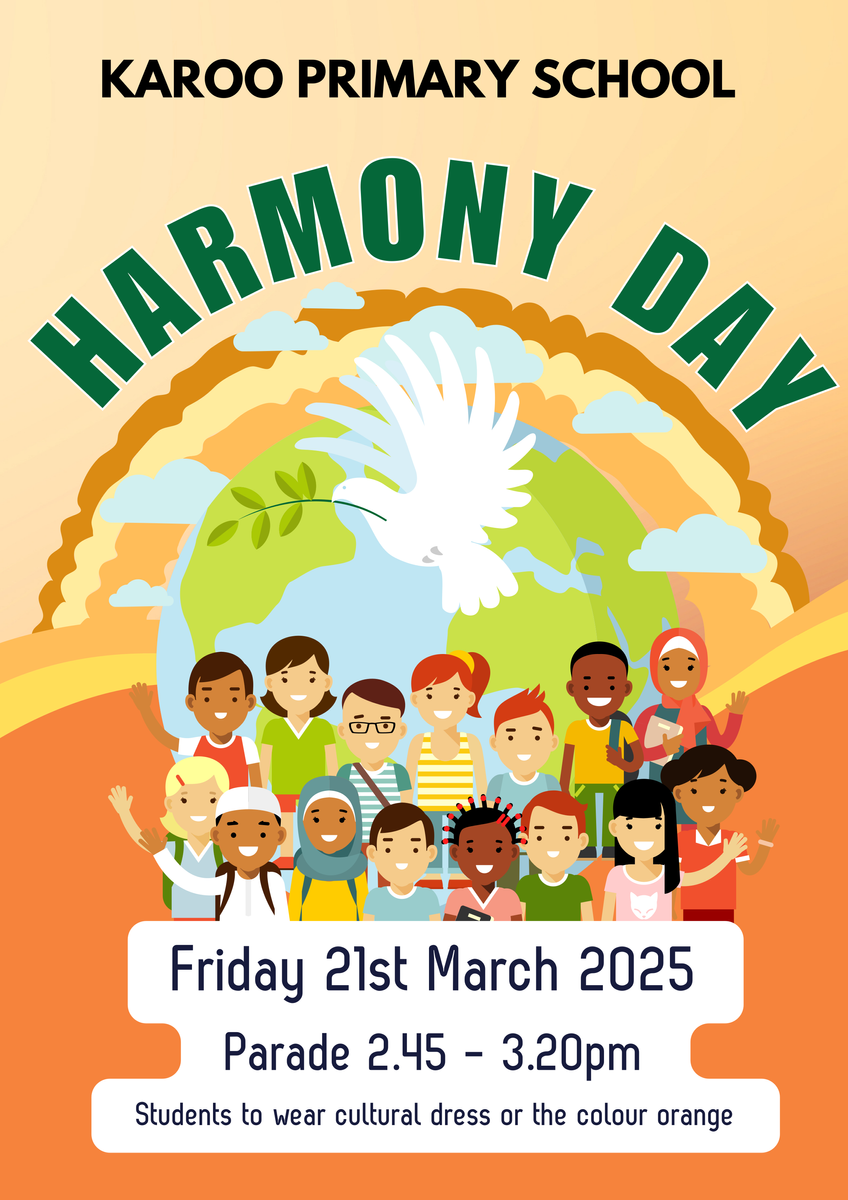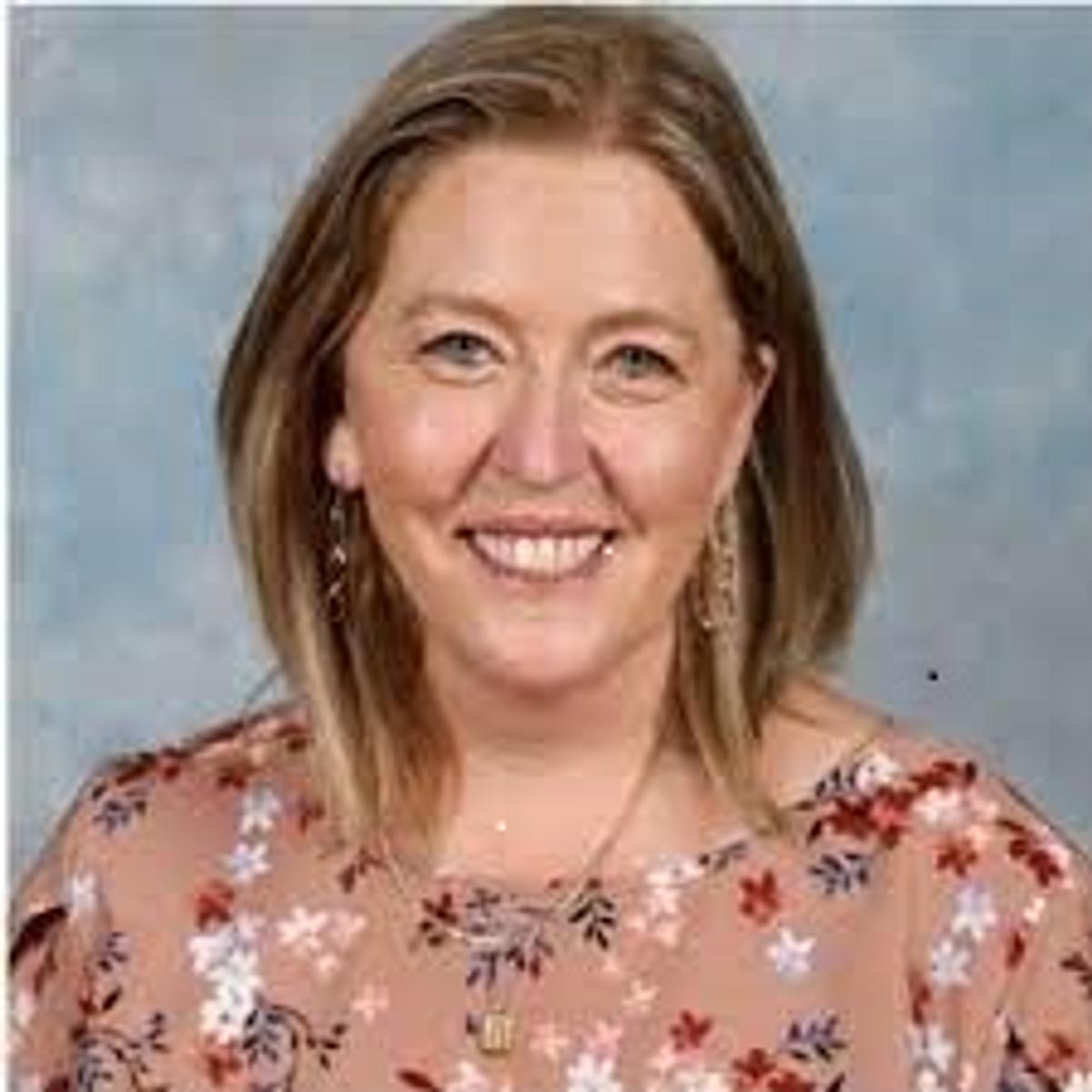Wellbeing and Inclusion
Mrs Robyn Harris - Wellbeing Learning Specialist

Wellbeing and Inclusion
Mrs Robyn Harris - Wellbeing Learning Specialist


Harmony Week is an annual celebration of Australia’s cultural diversity and the benefits it brings to the Australian community. It is a time to celebrate that Australia is one of the most successful multicultural societies in the world. It is about inclusiveness, respect and belonging for all Australians, regardless of cultural or linguistic background, united by a set of core Australian values.
Each year Karoo celebrates with Harmony Day - this year it will be held on Friday 21st March, with the theme of 'Everyone Belongs'. Students will complete a series of cultural themed activities around the school, and finish with a Harmony Day Parade from 2:45pm-3:20pm. Students can wear cultural dress, or simply dress in orange.
Orange is the colour chosen to represent Harmony Week. Traditionally, orange signifies social communication and meaningful conversations. It also relates to the freedom of ideas and encouragement of mutual respect. Students can choose to wear something orange to show their support for cultural diversity and an inclusive Australia.
Our country's cultural diversity is one of our greatest strengths and is at the heart of who we are. It makes Australia a great place to live. Building on over 65,000 years of First Nations cultures, Australia has become home to migrants from nearly 300 different ancestries. Australia’s immigration history has helped build our modern nation.
An integrated multicultural Australia is an integral part of our national identity. All people who migrate to Australia bring with them some of their own cultural and religious traditions. They also take on many new traditions. Collectively, these traditions have enriched our nation.
There are some fascinating statistics about Australia's diversity -
This information has been taken from ABS 2021 Census Data. For more information visit the Australian Bureau of Statistics website.


Kind Regards,
Robyn Harris


Wellbeing Learning Specialists